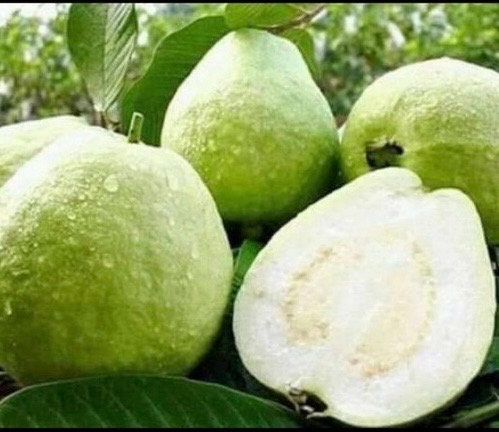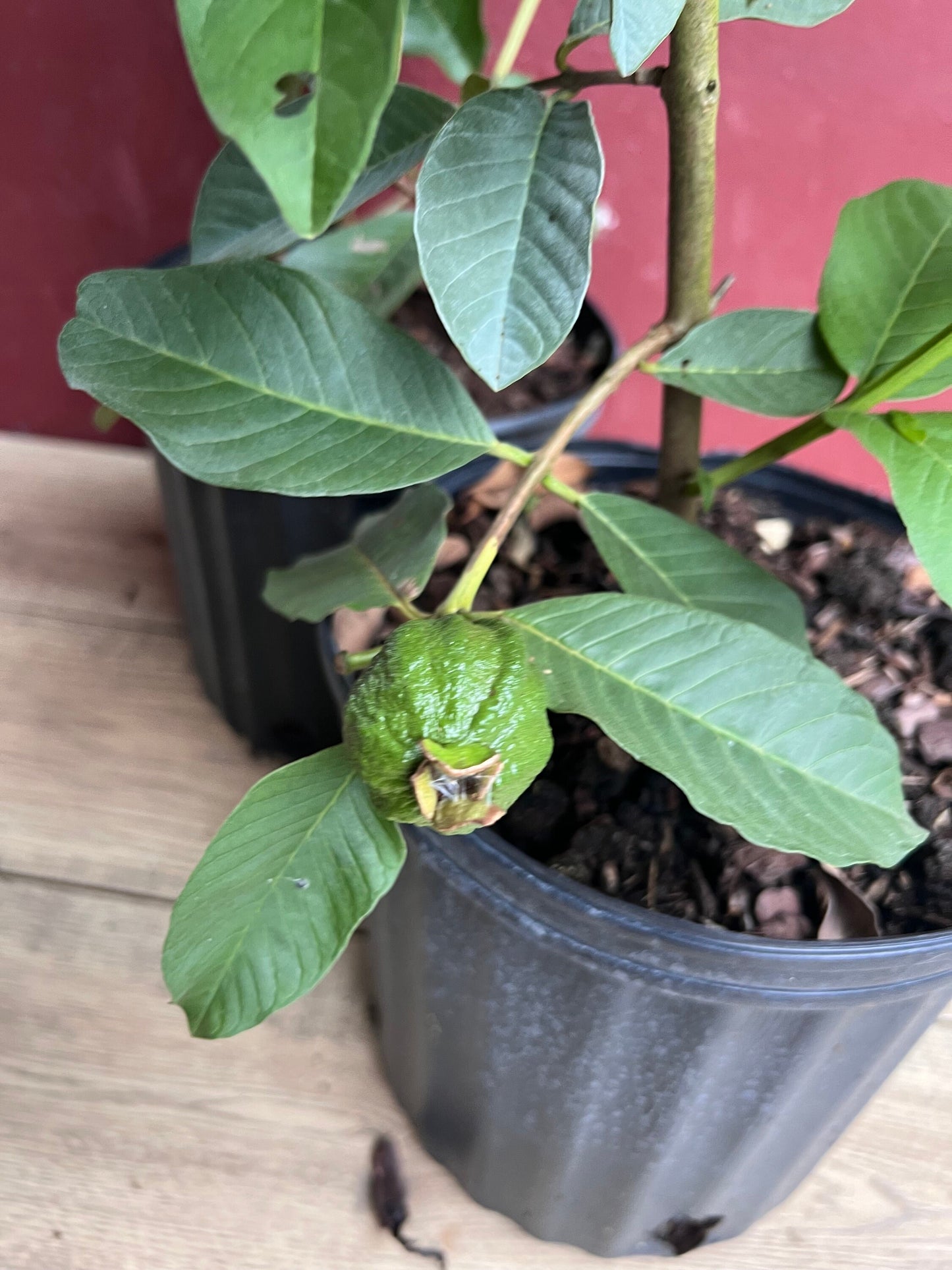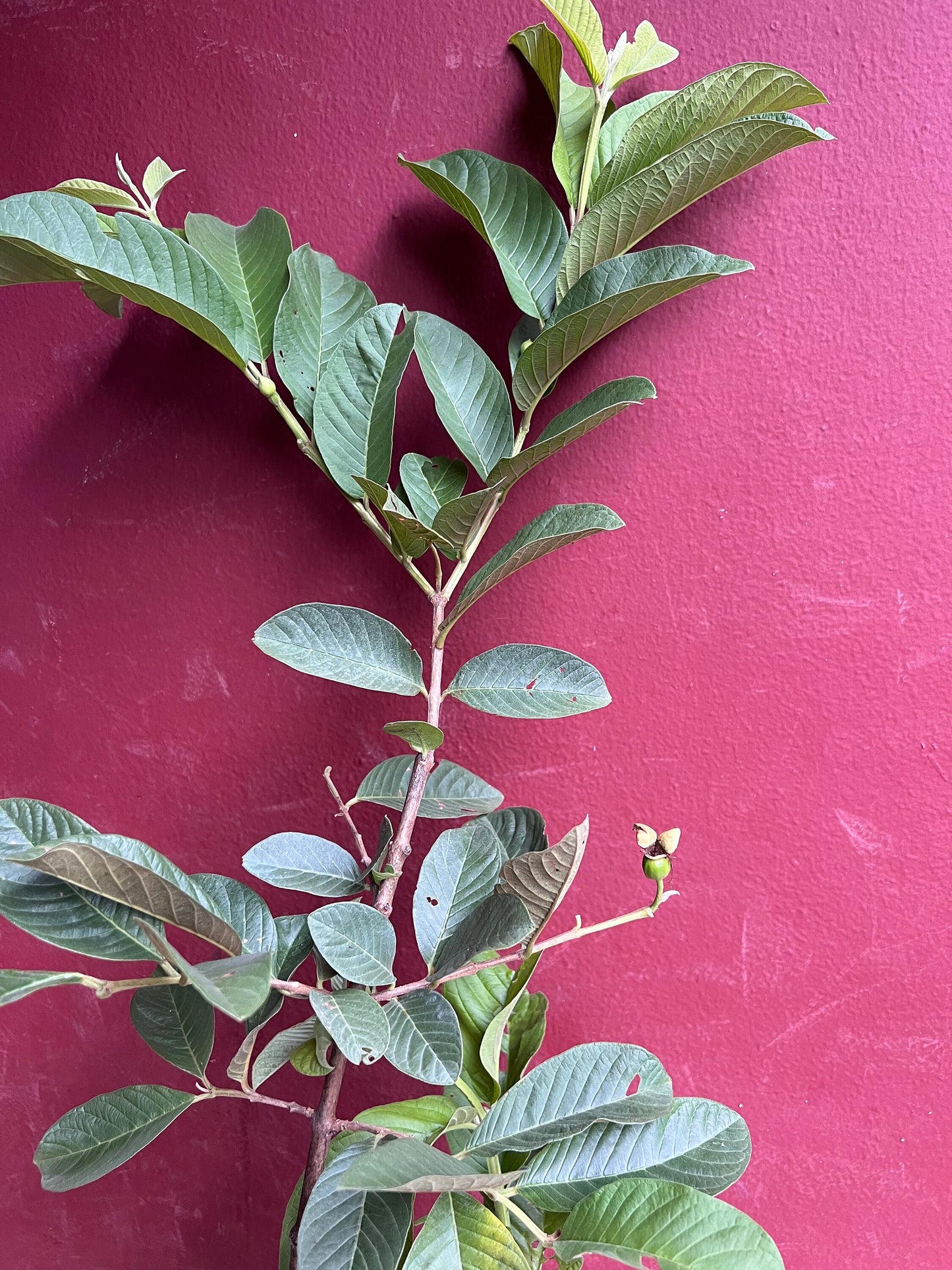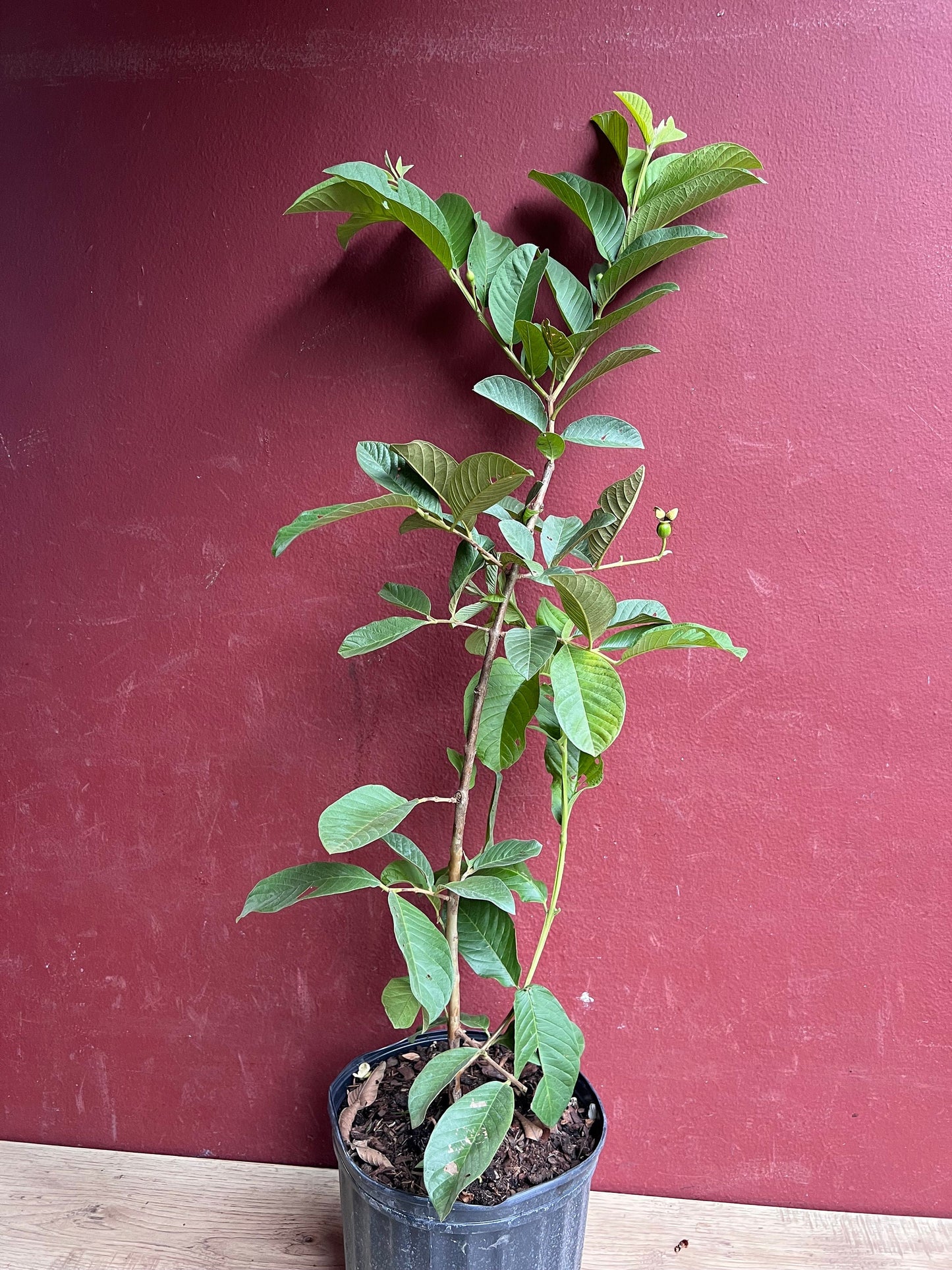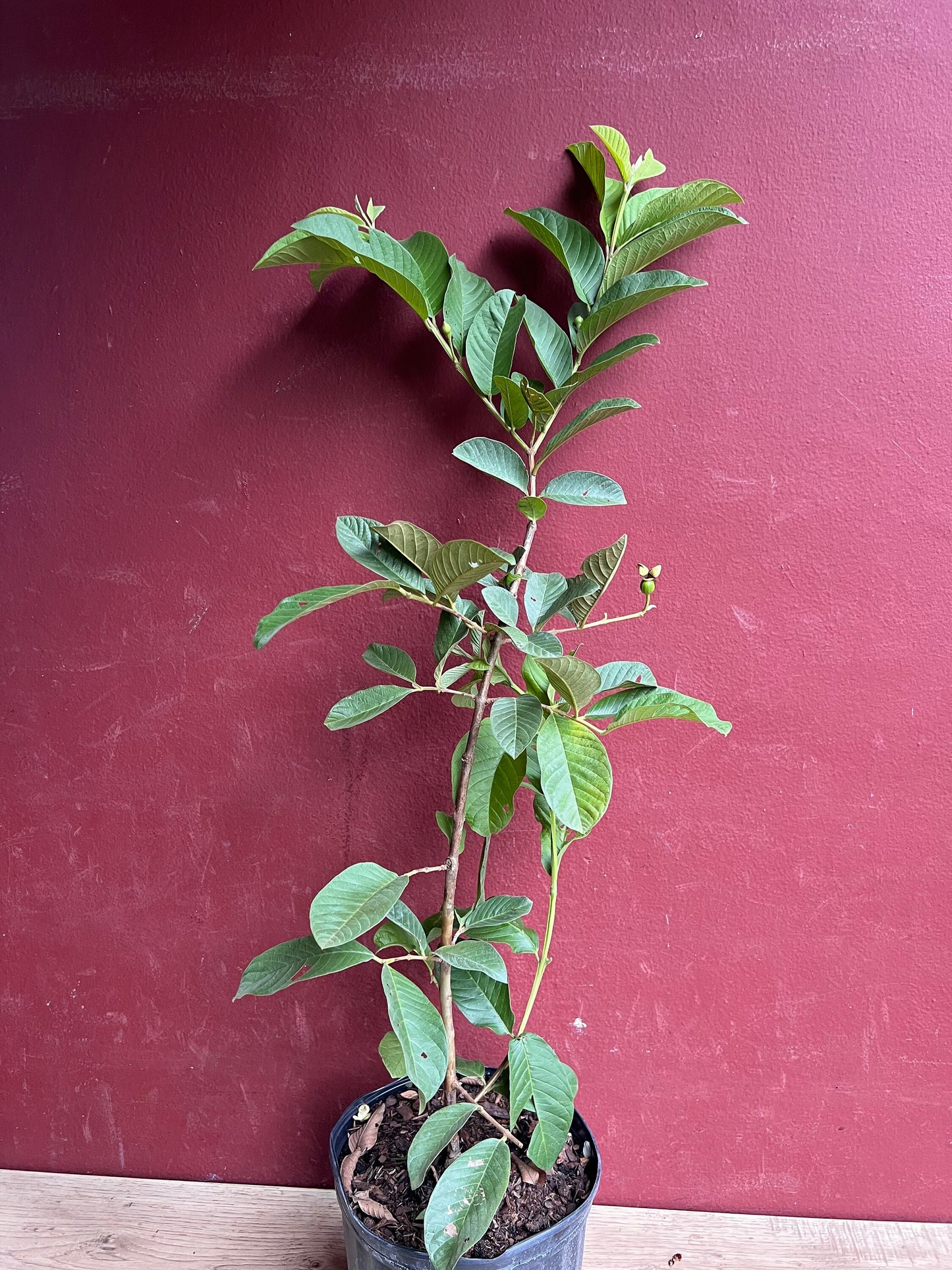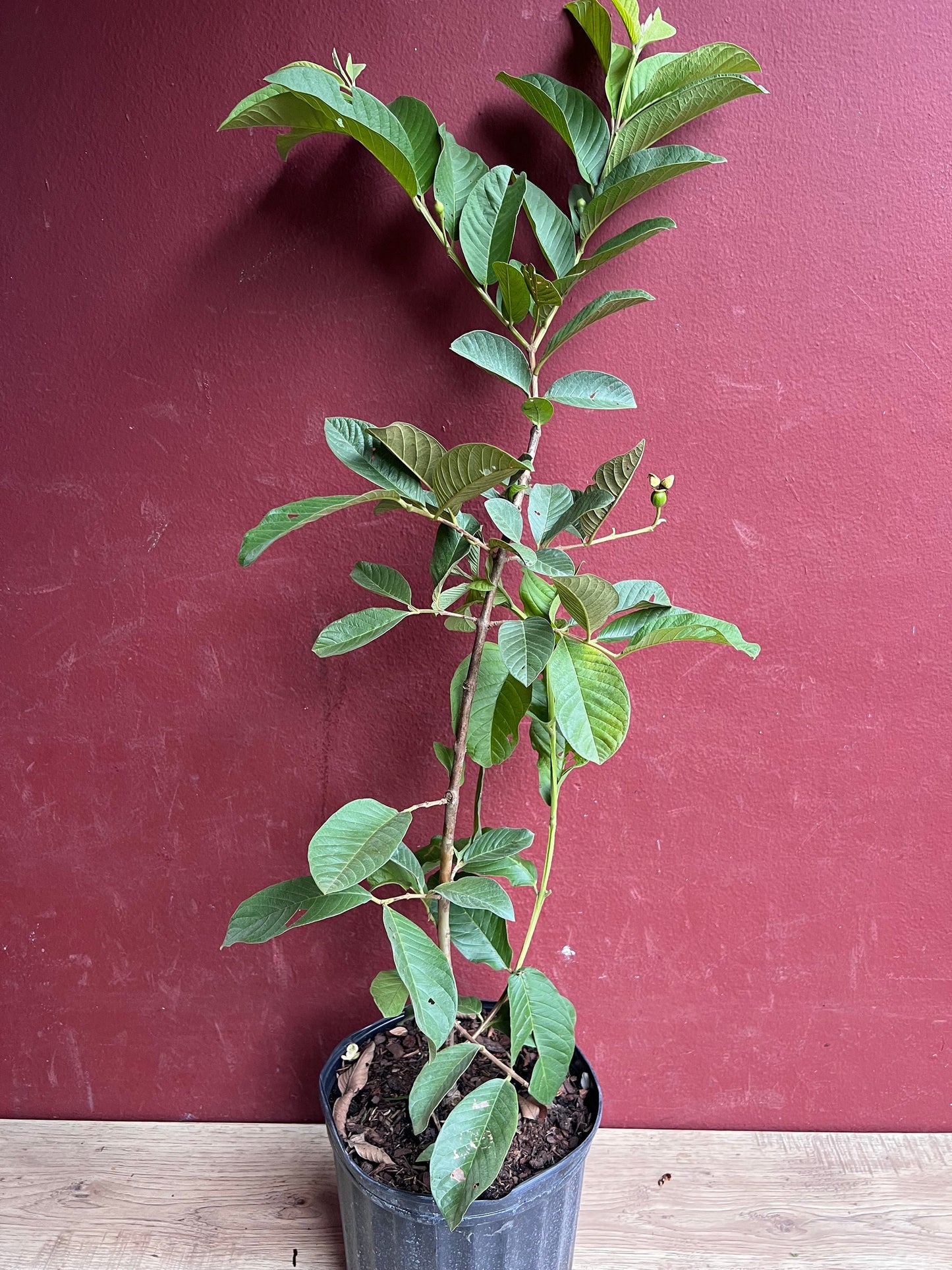Thai Guava, in 10" Pot, Jambu Batu, Psidium guajava, Ferang, White Guava tree, No Ship to CA and HI
Thai Guava, in 10" Pot, Jambu Batu, Psidium guajava, Ferang, White Guava tree, No Ship to CA and HI
Couldn't load pickup availability
Note: You will receive one White Thai Guava in 10" pot similar to the pictures
Thai guava, often referred to as farang in Thailand, is a popular tropical fruit known for its crisp texture, sweet-tart flavor, and refreshing juiciness. Unlike the larger, sometimes grainy varieties found elsewhere, Thai guava tends to be smaller, with a smooth skin that can range in color from pale green to yellow when ripe. It is typically eaten fresh, often with a sprinkle of chili powder and sugar, or used in juices, salads, and desserts. The fruit is rich in vitamin C, fiber, and antioxidants, making it a healthy and delicious snack. Thai guava is also prized for its versatility, offering a perfect balance of sweetness and tang that appeals to both locals and visitors.
Caring for Thai guava (Psidium guajava) requires attention to several key factors to ensure healthy growth and fruitful harvests. Here's a general guide:
-
Soil: Thai guavas thrive in well-drained, sandy loam soils with a slightly acidic to neutral pH (5.5 to 7). They need a sunny spot with at least 6-8 hours of direct sunlight daily. Make sure the site has good drainage, as guavas do not tolerate waterlogged soil.
-
Watering: Regular watering is essential, especially during the dry season, but avoid overwatering, which can lead to root rot. The soil should remain moist, but not soggy. In well-established plants, water them deeply about once a week, but water more frequently during dry spells.
-
Fertilizing: Fertilize Thai guavas every 4-6 weeks during the growing season with a balanced, slow-release fertilizer or organic compost. A fertilizer high in potassium can promote fruiting. Avoid excessive nitrogen, which may encourage leafy growth over fruiting.
-
Pruning: Prune guava trees regularly to maintain a manageable size and shape, remove dead or damaged branches, and improve air circulation. Light pruning can also encourage new growth and enhance fruit production. Remove any suckers or water sprouts that emerge at the base of the tree.
-
Pest and Disease Control: Thai guava trees can be susceptible to pests like aphids, fruit flies, and scale insects. Keep an eye on your plants and use organic pest control methods like neem oil or insecticidal soap if needed. Common diseases to watch for include fungal infections and root rot, so avoid waterlogging and ensure good airflow around the plant.
-
Harvesting: Guavas are ready to harvest when they reach full size and change color, typically from green to yellow or pale green. Gently press the fruit to check for slight softness; overripe fruit may become mushy. Harvesting early can lead to a more tart flavor, while letting them ripen fully will enhance sweetness.
-
Temperature and Climate: Thai guava trees grow best in tropical or subtropical climates with temperatures between 75°F and 95°F (24°C to 35°C). While they can tolerate brief periods of cold, frost can damage the fruit and leaves, so they should be protected from freezing temperatures.
By providing these optimal growing conditions, you can enjoy a healthy, productive Thai guava tree that yields delicious fruits year after year.
Share
